The 1,000-Year-Old Butter Buried Beneath Ireland
Plus a recipe for homemade cultured butter (and buttermilk!)
Hi friends,
Kicking off this week’s newsletter with something a little different. I was testing a recipe for homemade cultured butter and came across some truly fascinating history that I couldn’t help but share! I hope you enjoy it! As always, any feedback is welcome.
Butter, Cultured Over Thousands of Years
Last July, in County Donegal, Ireland, local Alan Moore was digging a drain on Michael Boyle's property when they came across something rather large and odd-looking buried within the soil.
As the two men worked to pull out the hefty hunk, Michael “got a very distinct smell of a cheesy butter from it and quickly realized that it was butter”, according to the archeologist Paula Harvey, who later visited the farm.
As strange as it may sound, the discovery is one of around five hundred similarly recorded excavations in Ireland (and one of the largest, too, at 50 pounds worth)! It turns out that the butter, buried deep within bogs, also known as bog butter, is a long-standing tradition that dates back to the Iron Age (1700 BC) as a method of storing and preserving animal fat.
Dairy fat or tallow was buried in wooden containers, pottery, and animal skins. Some researchers hypothesize that the butter was stored either as an offering to the gods, a means of long-term preservation, or simply as a secure hiding place from potential invaders.
But why bogs? Well, according to Smithsonian Magazine, “the cool, low-oxygen, high-acid environment of the bog made a perfect natural refrigerator.” Over time, the butter would slowly ferment without significant decomposition.
Allegedly, this butter might even be edible to this day, though I can’t find any definitive evidence here. And if it’s edible, what might it taste like? A few people have tried it, with mixed results, ranging from “putrid” to “funky” to “gamey.”
That said, Ben Reade, head of Culinary Research and Development at Nordic Food Lab, is experimenting with his own seven-year bog butter - I can’t wait to hear the results! Until then, bog butter remains a rather fascinating puzzle from our ancient past.
How to Make Cultured Butter (No Bog Necessary!)
The good news is that you can make your very own cultured butter at home without the need for thousands of years (or access to a bog)! Unlike bog-cultured butter, store-bought and homemade cultured varieties are only mildly tangy with a subtle, savory flavor. With a bit of flecked sea salt, it’s absolutely divine.
In the US, your average grocery store is stocked with an assortment of dairy products from sweet cream (kind of the standard) to "European-style" to cultured butter. Before we started mass-producing dairy products, cultured butter was the gold standard. Made from cultured cream, this fermented butter is still highly produced in Europe and other parts of the world.
That fancy French butter that’s popping up on TikTok? Cultured. That Kerrygold butter you like? Also cultured.
Okay, But What Exactly *is* Cultured Butter?
Cultured butter is made from fermented cream by way of lactic acid bacteria. Traditionally, cows had to be milked several times to produce enough cream to make butter. As a result, the fresh cream sat out at room temperature, naturally fermenting as it waited to be churned.
For a homemade version, you’ll mix cream with a bit of cultured buttermilk (which provides the bacteria) and let it sit out at room temperature for a day or two until it thickens and develops a tangy flavor. Then, it’s whipped until it separates into rich, creamy butter and fresh buttermilk.
Ingredient Notes
Heavy Cream: For best results, use a non-ultra-pasteurized (UP) heavy cream, as these creams tend to include additional preservatives that can prevent the butter from culturing properly. That said, I have had success with UP heavy creams with only gellan gum as an additive. You can check out the Testing Notes section in my crème fraîche recipe for more details.
Buttermilk: Look for buttermilk labeled as 'cultured buttermilk' or with active, live cultures; if the cultures are dead, the cream won't ferment! You can also use plain yogurt (again, with active cultures) or skyr. You'll need double the amount of yogurt.
FAQs
Do I need any special equipment to make this?
Yes, for best results, you’ll need:
A stand mixer, electric hand mixer, or food processor: Technically, you can also shake the cream in a jar or use a hand whisk, but it’s rather labor intensive.
Fine mesh sieve and a cheesecloth (or a very thin t-shirt)
Instant-read thermometer: Optional, but helps you manage the temperature of the cream to speed up or slow down the fermentation process as needed.
How long does it take for the cream to “culture”?
Depending on the temperature of your kitchen (aim for 70℉ - 80℉ / 21℃ - 27℃), it can take about 24 - 48 hours for the cream to start thickening and smelling tangy. The longer you leave it, the tangier the flavor!
Is this the same process as crème fraîche?
Yes, this is a very similar process to making crème fraîche! Though, for butter, we care less about the thickness of the fermented cream and more about the tang.
How does this compare to store-bought cultured butters and European-style butters?
I compared my homemade version to several store-bought butters, including Kerrygold (cultured), Vermont Creamery (cultured), and a standard sweet cream butter (no culture). I found the homemade butter to be a bit “funkier” and more flavorful than all the store-bought versions, though I did let it get quite tangy this time around. That said, the flavor of butter is rather subtle compared to most other ingredients, so it’s never going to be super aggressive (unless, say, you pick up some bog butter)!
Ready to try it out? Grab the full recipe below!
Have a great rest of the week,
- Karishma

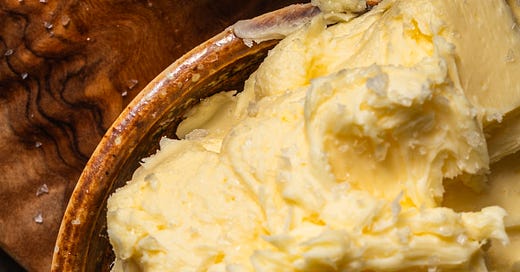



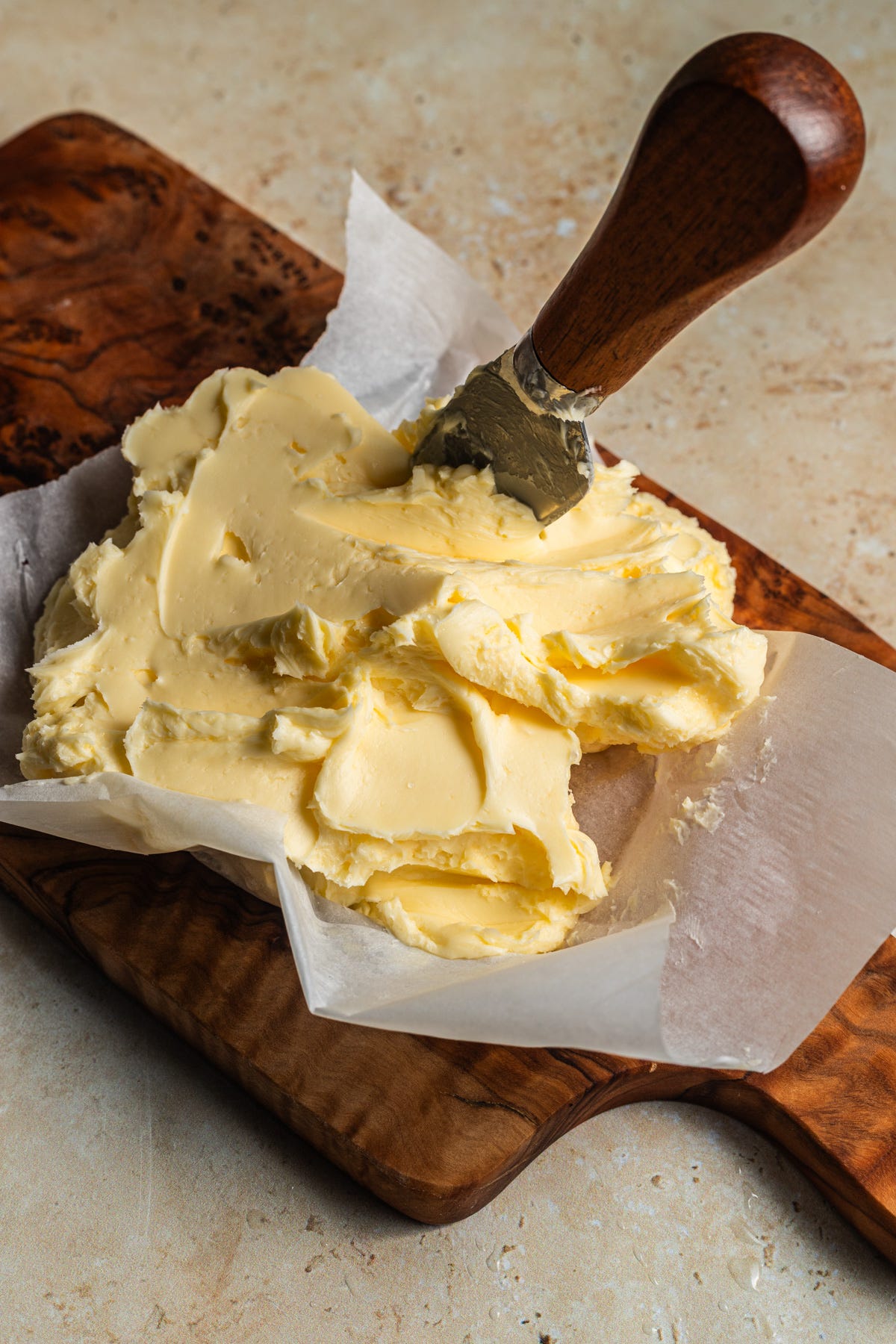
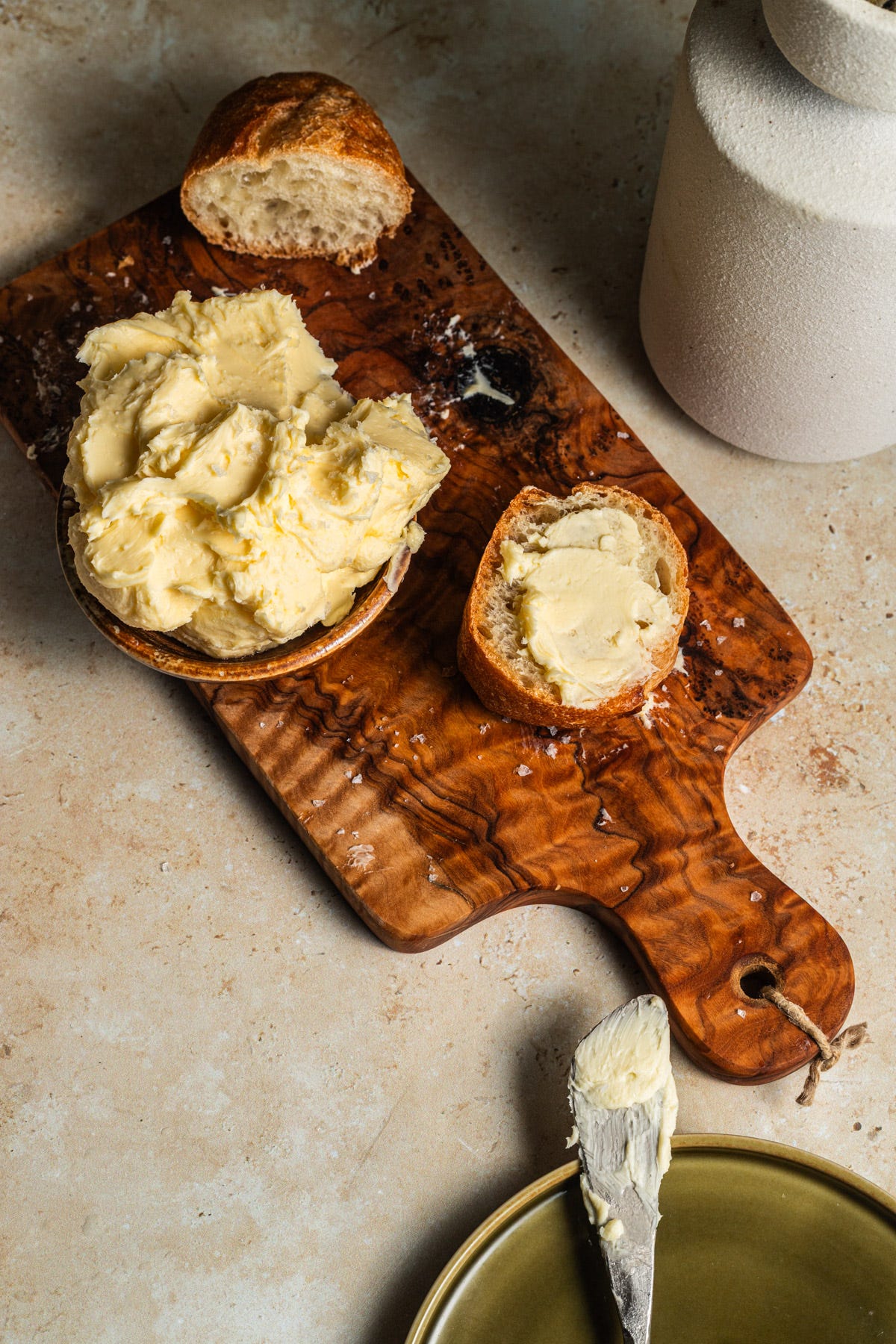
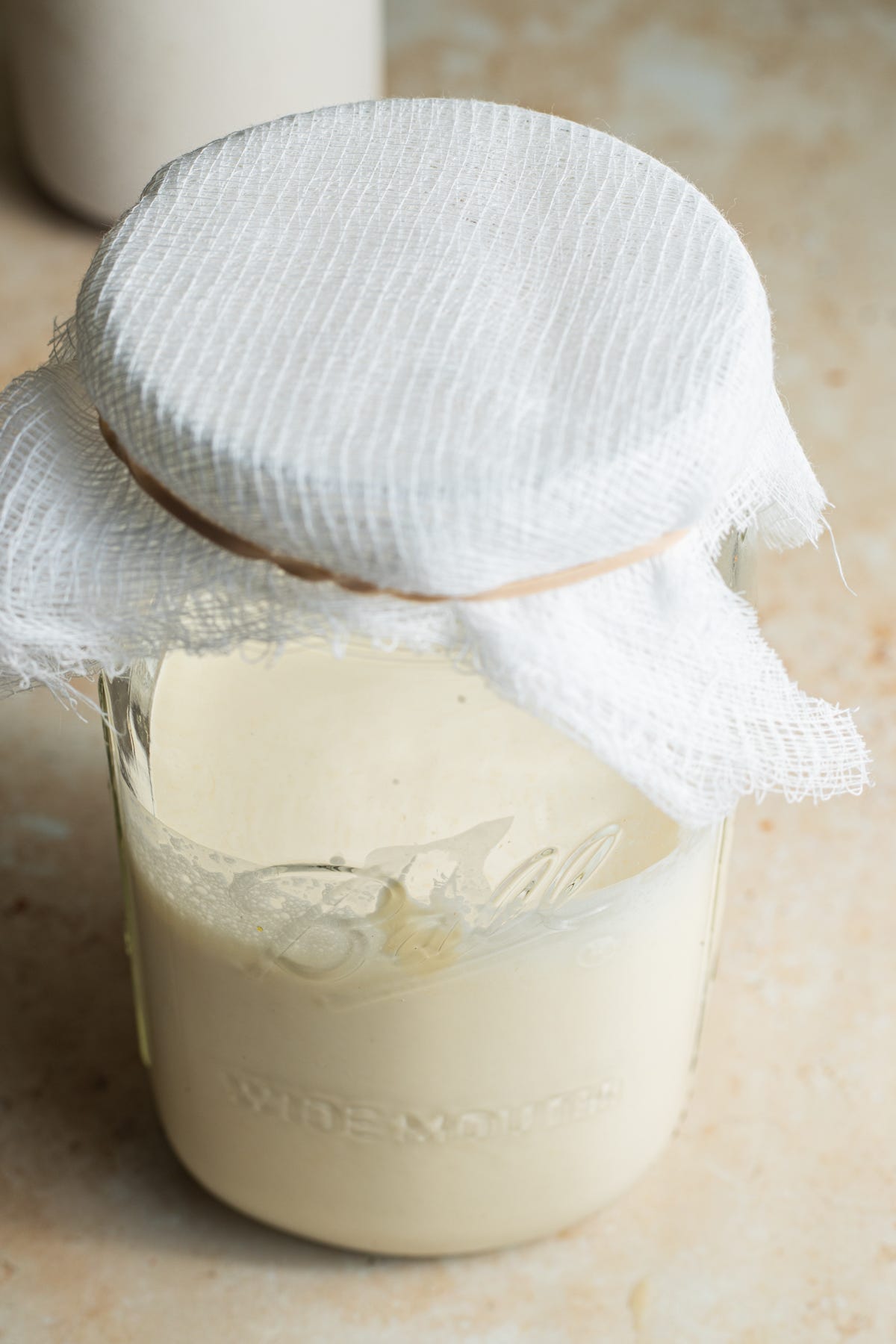
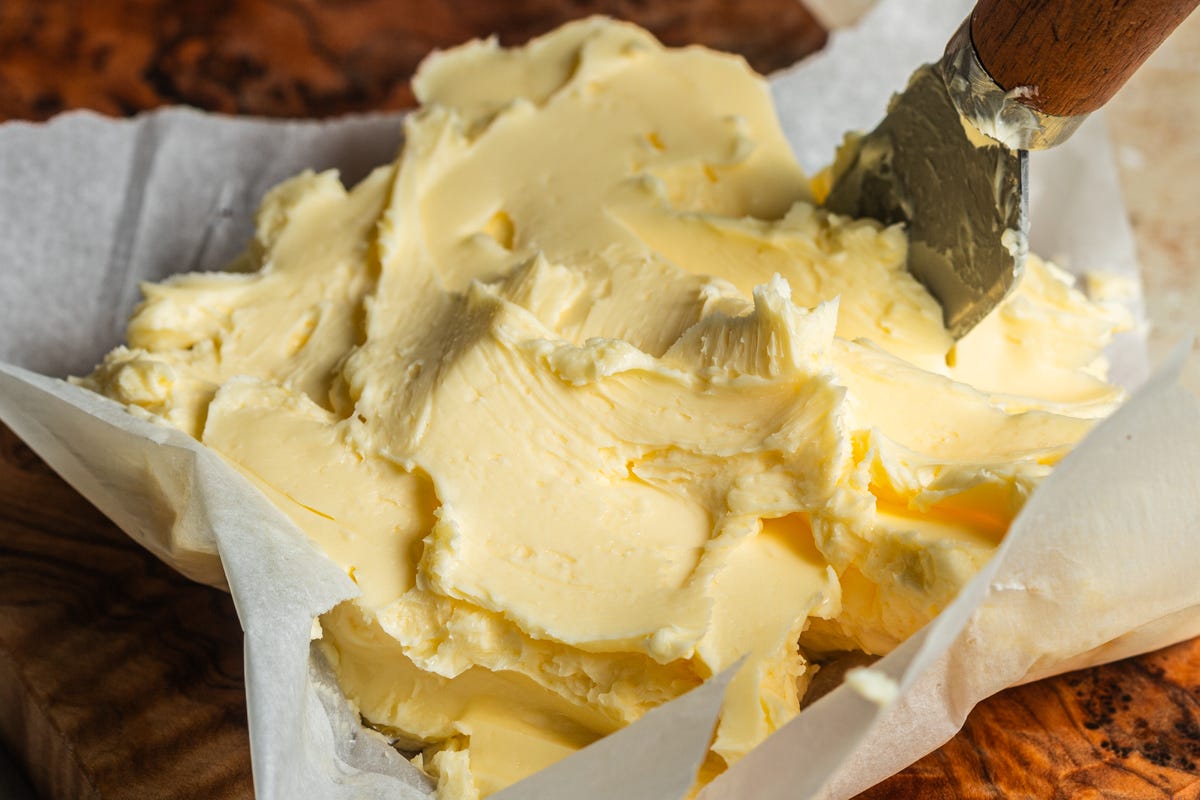
I am OBSESSED with this Karishma 🙌🏼 Thank you for sharing, my kids are butter snobs 😆
Thanks for sharing, Karishma! Another fascinating read and easy recipe! I’ll have to try this